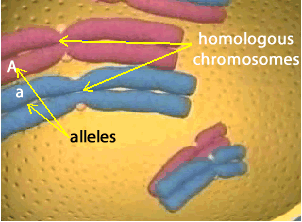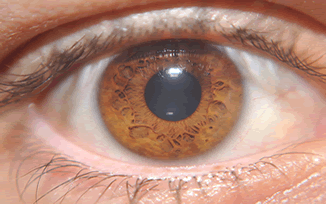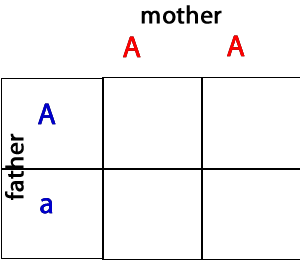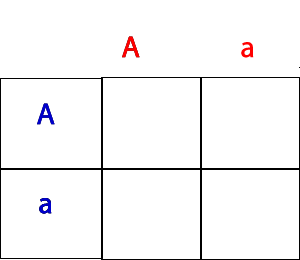Genes are inherited in pairs, one from the mother and the other from the father. Alternative options for the same traits are termed alleles. For example purple and red are the alleles for flower colour in a particular species.

Alleles are genes that code for a variant in the specific trait. One allele is usually dominant over the other, which is said to be recessive. Dominant alleles are usually given a capital letter while recessive ones are given a lowercase letter.
For example the gene for brown eye colour is dominant over the gene for blue colour. That is, if the individual has a gene for brown eyes (B) from the father and a gene for blue eyes (b) from the mother it will have brown eyes.
Genotypes BB or Bb have a phenotype of brown eyes while the recessive gene can only be expressed if the organism has the genotype bb.

Consider the example of fur colour in a particular species of dog.
The allele for white colour (A) is dominant over the allele for brown colour (a).
The mother has the genotype AA and mates with a male with the genotype Aa.
What is the phenotype of the father?
On the right is an example of all the possible combinations of genotypes in the first generation as a result of this mating.
If 100 plants are produced in the first generation:
- how many should be brown?
- how many should be white?
- how many are homozygous, that is, have the two identical genes?
- how many are heterozygous, that is, have two different genes?

The gene for dwarfism (a) is recessive while the gene for normal height (A) is dominant. Two heterozygous animals mate. The genotypes are shown on the right.
What are the possible genotypes? Solution
What is the chance that an organism will have normal height from this mating? Solution
What percentage of the first generation will be dwarfs? Solution

Solution

Two heterozygous parents for a genetically inherited dominant trait have a child. What is the probability that the child has this trait in their phenotype?
Solution

One of the parents is homozygous normal while the other is heterozygous for a genetically inherited recessive disease. What is the probability that a child born to these parents is normal?
Solution

Two parents who are both carriers for a genetically inherited, recessive disease decide to have a child. What is the probability that the child will also be a carrier?
Solution

Continue with the ethics of genetic screening